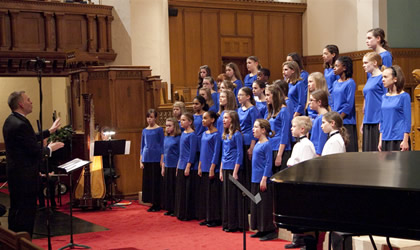The Ciompi Quartet will be giving only two concerts this fall and spring instead of the customary four, to allow for some changes. That means that lovers of chamber music who want to enjoy the premier ensemble in the state need to be careful to attend when and if possible. For me, that meant a three hour drive each way, and I was not disappointed. The performance was energetic, focused, and executed to the highest standards.
For the first of the two concerts, the quartet was joined by violist Rachel Kuipers Yonan, and cellist Brent Wissick, one each for two quintets. Yonan is new to the Triangle, having moved to Raleigh with her husband only three months ago. She is working with students at Duke as violist Jonathan Bagg is on sabbatical. She was by far the youngest musician on tonight’s program, but even so has compiled a fine record of accomplishments. With her brother, cellist Joseph Kuipers, she founded the Marinus Ensemble and has concertized extensively. Her training was at Curtis Institute of Music and Rice University. The Triangle is very fortunate that she has found a home here.
Wissick is a well-known musician in these parts, a professor of cello and chamber music at UNC since 1982. He is an expert in viols and Baroque cello, with many concerts and recordings to his credit, as well as successful students here and abroad.
When choosing the instrumentation for a string quintet, a composer has to judge what the timbre of the overall result should be – unless someone with a check is telling him what to write! It wouldn’t really be a great idea to add a violin, as there are already two in the quartet. An extra viola adds richness to the texture, as long as the spacing of the pitches is such to avoid muddiness in the middle ranges. Without too much going on down low, the feeling can be kept lighter. Adding a cello instead can provide gravitas, and also a boost to the lower line if the cellos play in unison. In addition, two cellos can facilitate using the first cello up high above the viola, while the second cello provides a bass line. There is a special intensity to the sound of a cello in its upper register that is not duplicated at those pitches by anything else.
The two quintets performed this evening were arguably the finest examples of each choice in the literature. There are some similarities; both are in C, both in four movements, and both are relatively long, appropriate for the scale of the undertaking in each.
The first of the two pieces was Mozart’s String Quintet in C, K. 515 (1787). This was for quartet plus viola. There is a great deal of pairing of instruments throughout the work, with the resulting duet accompanied by the others in every combination. Eric Pritchard‘s first violin line was clear and brilliant, as we have come to expect. Yonan’s second viola part was clearly well-done, but we can hope to hear her in a more soloistic role before too long.
After intermission, we were treated to Schubert’s “Great” String Quintet in C, D. 956. (The program listed this work as from 1787, when Schubert was 10 years old.) Schubert may have lived a brief life, but he was not shy about long pieces; this is certainly one of them. The first movement includes one of the most striking and lyrical themes in chamber music, introduced by the first cello, and then shared among the ensemble. That alone was worth the price of admission. The two cellos added to the dark corners and dramatic sweep of this work, which is evocative of the struggles and suffering the composer must have been facing near the end of his life. Even the sweet parts, and the soft slow sections, have an eerie afterglow so characteristic of the Romantic era.
The concert was well-attended, and highly appreciated. Our community continues to value the Ciompi Quartet as a primary feature on our cultural landscape; long may it continue to prosper.



![<p>
Duke New Music Ensemble [dnme] Features Duo Amantis in Trailblazing Works</p>](https://cvnc.org/wp-content/themes/Extra/images/post-format-thumb-text.svg)







